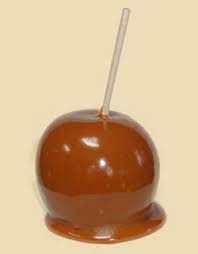Powell has often used the term, making people sick is bad for business; or as Fortune Magazine alliterates, the food industry has a $55.5 billion problem. Peter Elkend and Beth Kowitt of Fortune published sister pieces on the intersection of food safety and business focusing on Blue Bell’s recent listeria outbreak and re-entry to the marketplace.
Kowitt writes,
Food-borne illness is a giant, expensive challenge for companies big and small—and the surprise is, their exposure to the risk (and the liability when linked to an outbreak) is arguably bigger than ever. “Thirty years ago if you had a little problem, you were not going to get discovered,” says David Acheson, former associate commissioner for foods at the U.S. Food and Drug Administration, who today runs a consulting firm. “Now the chances of getting caught are significant, and it can be the end of your company.”
For instance, since 2006 investigators have fingered a bacterial strain called E. coli O157:H7 (at one time widely thought to be found only in meats) in bags of baby spinach, in hazelnuts, and in cookie dough. They’ve identified botulism in pasteurized carrot juice and found salmonella in peanut butter, ground pepper, jalapeño peppers, Turkish pine nuts, and pistachios. They’ve discovered hepatitis A virus in pomegranate seeds; cyclospora in bagged salad mix; and Listeria monocytogenes in ice cream.
“I’m skeptical that these are new connections,” says Ben Chapman, associate professor of food safety at North Carolina State University, who runs a website called the Barfblog (I meant new pathogen/food contamination -ben). “It’s stuff that’s always been there, and now we’re looking for it.” That would help explain why FDA-regulated food recalls have more than doubled over the past decade, to 565 last year, according to insurance company Swiss Re—with nearly half related to microbiological contamination. In interviews with more than 30 experts, nearly all said the rise in recalls was less an indicator of deteriorating food safety than it was of our improving capacity to connect the dots between foods and microbes.
Molecular techniques (PFGE to whole genome sequencing) also get a shout out from friend of barfblog, Linda Harris.
Up until the 1990s, most outbreaks we found were in the same geographic location—the church picnic where everyone eats the same bad potato salad and calls in sick the next day. Then new technology enabled scientists to determine the various DNA fingerprints of food-borne bacteria, which were uploaded into a common database. Investigators were suddenly able to link disparate cases of illness by finding bacterial matches. “It revolutionized outbreak investigation,” says Linda Harris, a microbiologist in the department of food science and technology at the University of California at Davis.
Whole genome sequencing is the biggest advance I’ve seen in my 15 years in food safety.
In the Blue Bell piece, Peter Eklund writes,
The episode reveals not only how difficult it is to trace the source of food-borne illness but also what happens when a company is slow to tackle the causes—and doesn’t come clean with its customers. Experts say Blue Bell’s responses this year were an example of “recall creep.” That occurs when executives hope that taking limited action—as the company did five times when informed of findings of listeria—will solve the problem and minimize commercial damage, only to find themselves forced to expand the recall repeatedly. It’s the opposite of Johnson & Johnson’s actions in the 1982 Tylenol-tampering episode, when the brand famously saved its reputation by swiftly recalling every bottle of the medication.
 Eklund and I spoke a lot about Blue Bell’s sharing of information specifics, which I’ve criticized as lacking. When a company is linked to illnesses and deaths and they say stuff like ‘food safety is important to us’ or ‘we’re going to step up what we are doing around microbiolgical sampling, cleaning and sanitation’ or ‘we’re hiring the best’ it often lacks substance. Sure, tell folks what you are doing but more important is pulling back the curtain on how many samples, what they are looking for, how they determined where and what to look for and what they are going to do if they find an issue. That’s what we mean by marketing food safety.
Eklund and I spoke a lot about Blue Bell’s sharing of information specifics, which I’ve criticized as lacking. When a company is linked to illnesses and deaths and they say stuff like ‘food safety is important to us’ or ‘we’re going to step up what we are doing around microbiolgical sampling, cleaning and sanitation’ or ‘we’re hiring the best’ it often lacks substance. Sure, tell folks what you are doing but more important is pulling back the curtain on how many samples, what they are looking for, how they determined where and what to look for and what they are going to do if they find an issue. That’s what we mean by marketing food safety.
But Eklund quotes Gene Grabowski, a PR consultant involved in Blue Bell’s response as playing the we’re sorry and trust us game,
“In my playbook, you apologize sincerely once and then you move on.” (He has been supplanted by a team from PR giant Burson-Marsteller led by Karen Hughes, who served as a top White House communications adviser to George W. Bush.) “Had the company known then what it knows now,” Grabowski says, “it would have done a full recall of all products earlier than it did.”
Two decades into the world of online discussions, immediate news exchange, and Twitter flame wars and some are still sadly following the apologize and move on approach.












